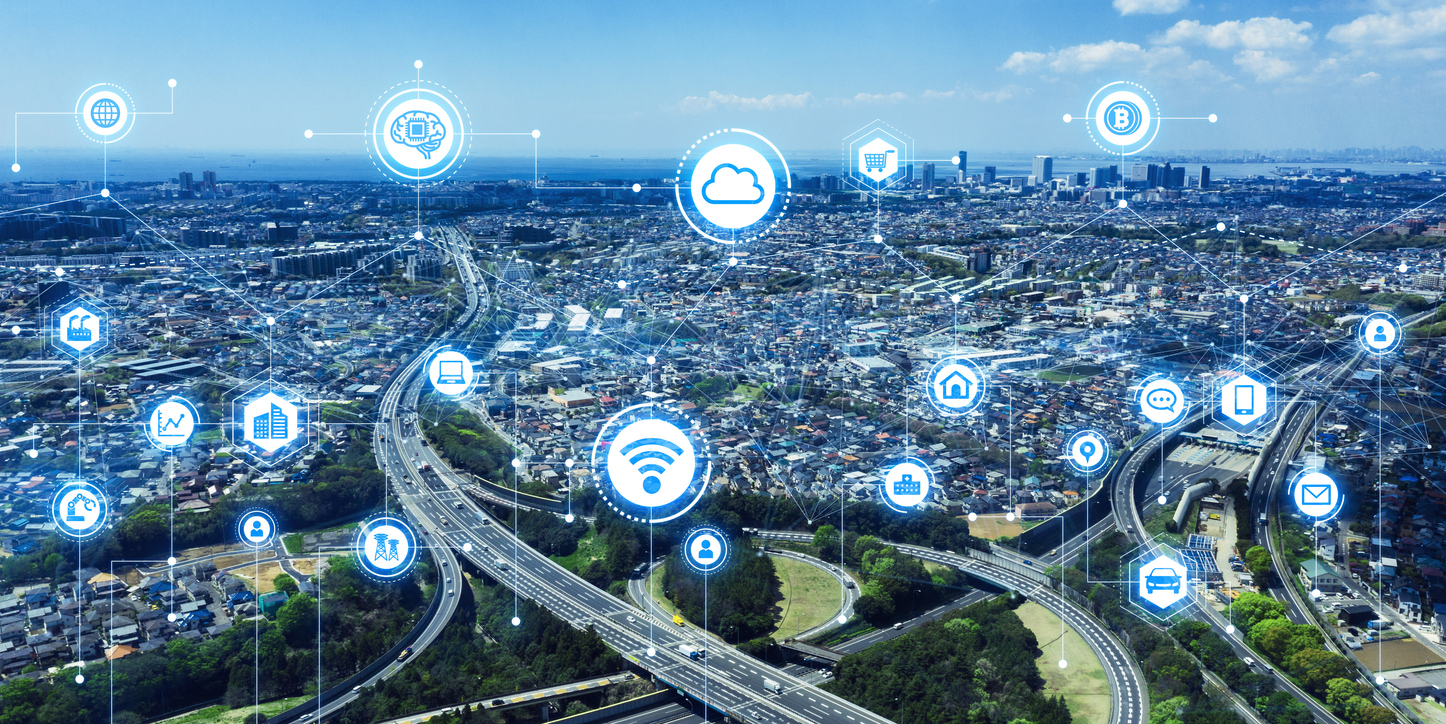In an era of rapid urbanization and digital transformation, cities worldwide are reimagining their infrastructure as intelligent, responsive systems. The ambition of the “smart city” goes beyond installing sensors on lampposts or deploying real-time traffic cameras. It encompasses a holistic platform that reliably ingests millions of events per second, draws actionable insights through advanced analytics, defends against evolving cyber threats, and presents information via intuitive, inclusive interfaces for diverse citizen populations.
Expertise traditionally cultivated separately in cloud computing courses, cyber security course, and UI UX design course programs must now converge. Cloud architects, security engineers, and UX designers collaborate closely to deliver resilient, secure, and accessible services, from adaptive street-lighting systems to real-time emergency-response dashboards.
This article explores the historical evolution of smart-city initiatives, the core drivers shaping modern platforms, reference architecture patterns, data-governance frameworks, human-centered UX strategies, emerging trends, a detailed case study of a metropolitan digital twin implementation, and future research directions.
Historical Evolution of Smart City Initiatives
Cities have long experimented with technology to improve public services, but early efforts were largely siloed, project-based pilots.
First-Generation Pilots
In the first decade of the 2000s, municipal agencies deployed standalone systems such as smart parking sensors or water-quality monitors. These solutions typically relied on dedicated on-premises servers, with each department managing its own infrastructure. Security measures were minimal , default passwords on cameras and unencrypted telemetry were common, and user interfaces consisted of desktop web portals accessible only to internal staff.
Cloud Adoption and Responsive Design
From 2013 to 2018, the advent of cloud-based Infrastructure as a Service (IaaS) empowered cities to scale storage and analytics without heavy capital investment. Urban data lakes emerged, housing logs from diverse sensor networks. Security practices began shifting left, introducing TLS encryption from devices to the cloud and basic network segmentation. Citizen-facing applications appeared: responsive web apps for reporting potholes or checking transit schedules, designed by teams with exposure to UI UX design course principles.
Containerization and Zero-Trust
Between 2019 and 2022, container orchestration platforms like Kubernetes facilitated microservice architectures, enabling rapid feature deployment and infrastructure automation through declarative Infrastructure as Code. cloud computing course taught these patterns, while cyber security course curricula introduced zero-trust concepts: every service call authenticated via mutual TLS, policies enforced via sidecar proxies, and fine-grained Identity and Access Management (IAM) controls. UX teams matured, conducting accessibility audits to ensure compliance with WCAG guidelines and mapping citizen journeys to identify pain points.
Digital Twin and Generative Simulations
Since 2023, many cities have invested in digital twins, real-time virtual replicas of urban systems that combine GIS layers, building models, and live sensor feeds. These platforms harness generative AI to simulate scenarios such as flood events or traffic diversions. Policy-as-code frameworks encode data-residency and consent rules into CI/CD pipelines, while AR/VR interfaces offer immersive planning environments. At the same time, UI UX design course methodologies guide the creation of multimodal interactions , voice-activated kiosks, accessible mobile apps, and public digital signage.
Core Drivers of Modern Smart City Platforms
Smart city platforms must simultaneously satisfy scalability, security, and usability demands. Three overarching drivers define their design:
Technological Drivers
- Ubiquitous connectivity through 5G, Wi-Fi 6, LoRaWAN, and NB-IoT allows millions of devices to stream telemetry.
- Serverless ingestion and streaming services (Kafka, Azure Event Hubs, AWS Kinesis) handle surges without manual provisioning.
- Edge AI inference on IoT gateways delivers sub-second response for critical applications, gunshot detection, air-quality alerts, or emergency dispatch triggers.
- Infrastructure as Code tools (Terraform, Crossplane) automate reproducible environments and disaster recovery.
Security Imperatives
- Critical infrastructure components, such as traffic-control systems and water treatment plants, face sophisticated nation-state and cybercrime attacks.
- Ransomware targeting municipal budgets demands robust backup, rapid recovery, and immutable audit logs.
- Zero-trust architectures eliminate implicit trust, enforcing authentication and authorization at every microservice call and device gateway.
- Policy-as-code ensures consistent enforcement of data-access rules across development, staging, and production.
Human-Centered Considerations
- Digital equity requires that systems serve tech-savvy residents and those with limited digital literacy or disabilities.
- Multimodal access , via web apps, mobile applications, voice assistants, and public kiosks , broadens inclusion.
- Transparency and trust hinge on clear privacy notices, consent management portals, and user-friendly controls over personal data.
- Continuous user feedback loops and in-context guidance drive iterative UX improvements.
Reference Architecture Patterns
The following table summarizes four canonical patterns that integrate cloud, edge, security, and UX layers to meet modern smart-city requirements:
| Pattern | Description | Key Components | Benefits |
| Elastic Cloud Backbone | Globally distributed ingestion, processing, and storage tier for city-wide data | Multi-region Kubernetes, Serverless functions, Managed streaming (Kafka/Event Hubs), Data lake | Infinite scale, cost optimization, unified operations |
| Zero-Trust Edge Fabric | Policy-driven authentication and authorization at every gateway and service | IoT edge gateways, mutual TLS, OPA policy engine, Identity federation (OIDC/OAuth 2.0) | Minimized attack surface, dynamic trust, compliance audits |
| Citizen-Centric Experience Layer | Persona-tailored interfaces across web, mobile, voice, and public kiosks | React/Flutter apps, Voice assistants, AR/VR portals, Accessibility frameworks (WCAG) | Inclusive engagement, consistent cross-platform UX |
| Digital-Twin Simulation Mesh | Real-time 3D modeling and generative scenario simulations of urban systems | GPU clusters, spatial databases (PostGIS), WebGL dashboards, generative AI engines | Predictive planning, stakeholder alignment, “what-if” analysis |
Elastic Cloud Backbone
Cities must process vast data volumes with minimal latency. An elastic cloud backbone provides:
- Data Ingestion
IoT gateways batch or stream MQTT/HTTPS messages to managed ingestion services. A schema registry prevents malformed payloads. - Stream Processing
Real-time analytics engines (Flink, Spark Structured Streaming) compute sliding-window metrics such as average air quality or crowd density. - Storage Tiering
Hot time-series databases (InfluxDB, TimescaleDB) hold recent data, while object storage (S3, Azure Blob) archives older records. Lifecycle policies move data to cold tiers as it ages. - Global Distribution
Kubernetes clusters and serverless endpoints span multiple cloud regions. Anycast DNS and CDN Points of Presence steer user and device traffic to the nearest healthy endpoint.
Zero-Trust Edge Fabric
Securing a sprawling network of devices and microservices demands a zero-trust fabric:
- Device Identity
Each edge gateway and sensor possesses a hardware root of trust (TPM or secure element). Certificates are issued and rotated automatically via a centralized PKI. - Policy Enforcement
OPA/Rego policies define which identities may invoke which APIs under specified contexts (time, location, device state). Sidecar proxies (Envoy) enforce these policies and handle TLS. - Secure Data Path
Mutual TLS ensures both client and server authentication. Payloads remain encrypted end-to-end, from device through analytics pipelines. - Threat Detection
Behavioral analytics models monitor traffic patterns for anomalies, while runtime agents detect configuration drift or compromise indicators.
Citizen-Centric Experience Layer
Engaging millions of residents requires careful persona development and inclusive design methods:
- Persona Workshops
Stakeholders map out representative personas, commuters, business owners, seniors, tourists , documenting their goals, pain points, and contexts of use. - Multi-Channel Delivery
SPAs built with React or Flutter offer responsive web and mobile experiences. Voice assistants (Alexa, Google Assistant) answer transit queries at bus stops. Public-facing kiosks provide touchscreens for service requests. - Accessibility and Localization
Interfaces comply with WCAG 2.1 standards: sufficient color contrast, keyboard navigation, ARIA landmarks. Dynamic translation services render content in multiple languages. - Performance Optimization
CI pipelines enforce Core Web Vitals budgets (LCP, FID, CLS). Edge rendering via Functions-as-a-Service ensures instant first-load experiences.
Digital-Twin Simulation Mesh
Digital twins empower planners and responders with predictive modeling:
- 3D Spatial Modeling
GIS layers, building information, and live sensor feeds combine into a unified 3D model. Rendering stacks like Three.js or Unity WebGL display real-time states. - Generative Scenario Simulation
LLMs draft policy proposals, while diffusion models generate realistic event sequences (e.g., flood progression). - Interactive What-If Analysis
Sliders and parameter inputs let users simulate the impact of changes, pedestrianizing streets, adjusting transit schedules, or reallocating energy resources. - API-First Extensibility
GraphQL endpoints expose real-time data and simulation controls for third-party developers to build customized tools.
Data Governance and Privacy Frameworks
Smart-city platforms collect vast amounts of sensitive information: location traces, video streams, health-related sensor data, and citizen service requests. Robust governance ensures ethical, legal, and transparent usage.
Data Classification and Access Controls
Data must be classified by sensitivity and governed accordingly:
- Public
Non-sensitive information, such as aggregate air-quality indices or general transit schedules. - Internal
Operational metrics and anonymized mobility patterns are accessible only to city staff. - Restricted
Camera footage, utility usage data, and other potentially identifying sources. - Personal
Service requests linked to individual citizens require explicit consent and strong protection.
Attribute-Based Access Control (ABAC) policies , expressed in OPA/Rego , combine user roles, device identity, geolocation, and time constraints to determine permissions. Policies reside alongside application code, ensuring consistent enforcement across environments.
Privacy by Design
Adopting privacy-first principles prevents misuse and fosters trust:
- Minimize PII Collection
Collect only data essential for service delivery. Where possible, employ pseudonymization and tokenization. - Data Retention Policies
Automatically purge personal data after predefined intervals, with configurable retention windows by data class. - Differential Privacy
Introduce calibrated noise into aggregated analytics , for example, crowd density heatmaps , to protect individual identities. - Consent Management
Citizen portals allow opt-in/opt-out of data categories (transit usage, environmental sensors). Immutable logs record consent changes for auditing.
Auditability and Transparency
Transparent operations underpin citizen confidence:
- Append-Only Ledgers
Blockchain or tamper-evident logs record all data-access and transformation events. Auditors and citizens can review records via read-only interfaces. - Continuous Compliance
CI/CD pipelines integrate regulatory rule checks (GDPR, CCPA, local privacy laws) and generate automated compliance reports. - Open Data Portals
Shared datasets , carefully anonymized , encourage innovation while preserving privacy safeguards.
Human-Centered UI/UX Strategies
Delivering inclusive and effective interfaces for millions of city dwellers requires rigorous UX methodology informed by UI UX design course best practices.
Inclusive Design Principles
- WCAG 2.1 AA
Adhere to contrast ratios ≥ 4.5:1, keyboard operability, and screen-reader compatibility through semantic HTML and ARIA roles. - Simplified Modes
Provide “easy view” options with larger fonts, streamlined navigation, and contextually simplified content for users with cognitive or visual impairments. - Language Localization
Automatically detect or allow selection of preferred language; translate content dynamically via integrated localization pipelines.
Context-Aware Workflows
- Geofencing
With user consent, surface relevant services, nearest transit stops, air alerts, and waste-collection schedules, based on current location. - Role-Based Interfaces
Tailor dashboards for citizens (service requests, transit planning), city staff (operational monitoring, permit approvals), and emergency responders (real-time incident maps).
Multimodal Interactions
- Voice-First Interfaces
Smart kiosks equipped with speech recognition enable hands-free queries for visually impaired or non-literate users. - AR Overlays
Field technicians wearing AR glasses see maintenance instructions overlaid on physical infrastructure (hydrants, transformers), improving repair accuracy and speed. - Conversational Bots
Chatbots manage FAQs, route guidance, and non-urgent reporting, seamlessly escalating to human operators when needed.
Continuous Feedback and Iteration
- In-App Feedback Widgets
Prompt users with simple thumbs-up/down or comment fields after completing a task (e.g., reporting a pothole). - Usability Testing Panels
Recruit diverse citizen panels for regular testing sprints, ensuring the product meets real needs and uncovers hidden pain points. - Telemetry-Driven Refinement
Analyze drop-off points (abandoned forms or search queries) and iterate on UI flows to reduce friction and improve completion rates.
Emerging Trends
The landscape of smart-city engineering continues to evolve rapidly. Forward-looking practitioners should explore:
Edge-AI for Predictive Maintenance
Deploy tiny ML models on edge gateways to detect anomalies , streetlight flicker, water-pressure dips, structural vibrations , and automatically generate maintenance tickets without human intervention.
Zero-Knowledge Proofs for Data Sharing
Enable inter-agency collaboration (transportation, utilities, public safety) by verifying data properties without exposing raw personal information, preserving privacy while facilitating coordinated responses.
Generative Scenario Planning
Use LLMs and diffusion models to draft policy recommendations, urban development proposals, or public-safety briefings grounded in real-time data, empowering non-technical stakeholders to explore complex data sets through natural language.
Sustainability-Aware Scheduling
Align compute-intensive batch jobs (waste-collection optimization, energy-demand forecasting) with periods of surplus renewable energy in the grid, reducing carbon footprints and supporting municipal sustainability goals.
Immersive 3D Citizen Portals
WebXR applications let residents virtually explore proposed infrastructure changes, new parks, bike lanes, or transit lines, in interactive 3D before physical construction, gathering community feedback early in the planning cycle.
Case Study: Metropolis Digital Twin Deployment
Background
Metropolis, a city of 3 million residents, faced chronic traffic congestion, rising peak electricity demand, and a need for faster emergency response. Its CIO sponsored a digital-twin initiative to tackle these challenges through data-driven insights and citizen engagement.
Objectives
- Reduce downtown traffic congestion by 25% within 12 months
- Lower peak summer electricity demand by 15%
- Improve emergency dispatch times by 20%
- Achieve a 90% citizen satisfaction score for digital services
Architecture
Elastic Cloud Backbone
- Ingestion
Fifty million daily IoT events , from traffic sensors, air-quality monitors, and utility meters , stream into Kafka clusters and Azure Event Hubs. - Processing
Flink jobs compute rolling metrics such as average vehicle speed per corridor; serverless functions trigger alerts when thresholds are crossed. - Storage
Redis stores hot feature data for low-latency queries; Azure Data Lake archives historical records, with lifecycle rules moving data to cold storage after six months.
Zero-Trust Edge Fabric
- Gateways
Five thousand edge gateways run mutual TLS and enforce OPA policies, ensuring only authorized devices and services exchange data. - PKI Automation
Certificates rotate every seven days via cert-manager and a centralized HashiCorp Vault instance. - Behavioral Monitoring
ML models onboarded as sidecars detect anomalies in device traffic patterns and flag potential compromises.
Citizen-Centric Experience
- PWA
A React-based progressive web app offers route planning, incident reporting, and home-energy dashboards, with offline support via service workers. - Voice Kiosks
Two hundred transit hubs host voice-enabled kiosks supporting English, Spanish, and Mandarin. - AR Field Tools
Public works crews use HoloLens devices to visualize underground utility maps overlaid on the physical environment.
Digital-Twin Simulation Mesh
- 3D Model
GIS layers, building footprints, and real-time sensor feeds combine in a Three.js dashboard for planners. - Generative Scenarios
LLMs draft flood-response strategies, while diffusion models simulate pedestrian flows under various street-closure scenarios. - Open APIs
GraphQL endpoints expose both live data and simulation controls for independent developers.
Governance
- Privacy by Design
PII hashed at ingestion; differential privacy applied to crowd-density heatmaps. - Audit Ledger
A blockchain-backed ledger records all data-access and policy-decision events, viewable by regulators and citizens. - Continuous Compliance
CI pipelines enforce GDPR, CCPA, and local privacy statutes, automatically rejecting infra changes that violate regulations.
Outcomes
- Traffic congestion decreased by 28% within six months.
- Peak electricity demand fell by 18% during the summer heat wave.
- Emergency dispatch times improved by 22%.
- Citizen satisfaction with the digital-twin portal reached 92%.
Future Research Directions
Smart-city platforms are ripe for continued innovation. Key areas for academic and industry collaboration include:
Autonomous Edge Federation
Develop AI agents that negotiate compute and data-sharing SLAs among edge nodes dynamically, optimizing latency and resource utilization without human intervention.
Explainable City-Scale AI
Define metrics and visualization techniques that make complex routing, energy allocation, and emergency-response decisions understandable to planners and the public.
Behavioral Economics in UX
Apply nudge theory to create interface elements and notifications that encourage sustainable citizen behaviors, public-transit use, energy conservation, or waste-reduction practices.
Quantum-Safe IoT Protocols
Transition municipal networks and IoT endpoints to post-quantum cryptographic algorithms, future-proofing critical infrastructure against emerging quantum-computing threats.
Ethical Digital Twin Governance
Establish frameworks for participatory policymaking that integrate citizen feedback directly into generative scenario simulations, ensuring transparency, equity, and accountability.
Conclusion
Delivering truly smart, resilient, and inclusive city platforms demands an integrated approach, one that fuses the distributed-systems expertise of cloud computing courses, the defense-in-depth principles of cyber security course, and the empathy-driven practices of UI UX design course.
By adopting elastic cloud backbones, zero-trust edge fabrics, citizen-centric experience layers, and digital-twin simulation meshes , all underpinned by robust data governance and inclusive UX strategies , municipal and technology partners can unlock unprecedented improvements in urban mobility, sustainability, and public safety. Emerging trends in edge-AI, generative scenario planning, and immersive interfaces promise even richer possibilities. As cities embrace this multidisciplinary framework, they will usher in an era of secure, equitable, and resilient urban innovation.














